If you’re interested in bonsai trees and how they are grown, you might be wondering which kinds of trees are suitable for being turned into bonsai trees and how it can be done. Can you bonsai any tree?
Pretty much any tree can be grown as a bonsai, although some species tend to be weaker if you grow them as bonsai trees. Trees that have very long tap roots often do less well as bonsai trees, while those with compact roots do better. Particularly good bonsai specimens are often maples, junipers, boxwoods, cotoneasters, pyracantha, and beech trees.
Can Any Tree Be A Bonsai Tree?
Yes, any tree can be grown as a bonsai, whether it is evergreen or deciduous. Bonsai trees are considered an art form and are not associated with any kind of tree. You can grow any tree as a bonsai if you know what you are doing, no matter what sort of tree it is.
However, you will probably find that some trees are easier to grow as healthy, happy bonsai trees, while others will struggle more and generally seem more sickly. So, what makes a good (or at least easy to grow) bonsai?
Factor One: Choose Foliage Carefully
Trees that are particularly good as bonsai trees are those with small leaves, as the growth will look in scale with the rest of the plant. Plants with large leaves may not look as good, because the leaves won’t be in scale and will feel proportionally wrong.
Of course, it is still perfectly possible to turn large-leafed trees into bonsai trees, and you can get some incredible effects in this way. However, you will need to style and shape the tree with more care to make the large foliage feel deliberate and in keeping with the smaller trunk.
Trees that have naturally smaller foliage tend to be easier to turn into bonsais because the finished tree will automatically look good. You don’t have to worry about the proportions; they will work. If you want to turn a large-leafed tree into a bonsai, you will have to think more carefully about your approach.
The foliage of some trees is very small, occasionally only a few centimeters or even millimeters, and this will build up the feel of the tiny world that you are trying to create. By choosing this kind of tree, you give yourself an advantage and greater chances of creating something beautiful.
Factor Two: Think About Pruning
Trees that are easy to prune and adaptable to being pruned are good for turning into bonsai trees. Some trees do not like having their leaves, branches, and roots pruned, and therefore struggle when they are miniaturized. It’s important to check whether a tree can cope with being cut or not before trying to turn it into a bonsai.
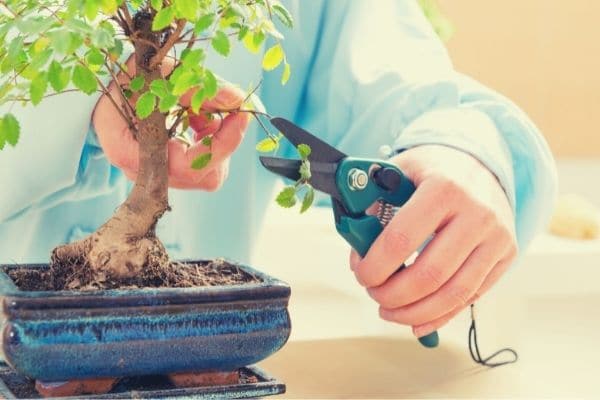
Some trees will happily just start sprouting new growth as soon as they have been pruned, without suffering from any ill effects. Other trees do something that is known as back budding, and this means that you will have to prune them with more care.
You can still make trees that prefer not to be pruned into bonsai trees, but you will need to be more careful about cutting them back and reduce the amount of pruning that you need to do as much as possible.
Often, trees like pines are hard to turn into bonsai trees, because they back bud, but it can still be done – and indeed, some people see the beauty in the challenge and prefer to create bonsai trees with the more difficult species.
Factor Three: Think About The Root System
In terms of what makes a bonsai tree healthy, the root system and its suitability for growing in a small space are important to consider.
Trees with compacted root systems in their large form are more likely to grow successfully as bonsai trees. If you try and grow a tree with a long taproot, such as a monkey puzzle tree, you may find that it struggles because it does not like having its taproot squashed.
Research what kind of roots the tree you want to turn into a bonsai has before you make a start. This will help you to make decisions about what kind of pot to use and how successful you are likely to be.
If you are just starting to grow bonsai trees, it’s a good idea to choose some easy options to begin with. You will have more success with these, and you can gain experience that will help you as you move onto trickier bonsai trees.
How Do You Create A Bonsai?
Making a tree grow as a bonsai is quite a complex and ancient art form, and some people study this for years to become good sculptors. Bonsai trees are seen as creative and beautiful, and it’s well worth learning how to do it properly from experts.
The basics of bonsai creation are fairly straightforward. The techniques to make a bonsai tree involve pruning the roots, pruning the crown, and using a shallow container to prevent the roots from getting too big. If you use these in the right balances, you should be able to keep any tree at the proper size for a bonsai.
You have to be very patient to grow bonsai trees, because they grow extremely slowly in most cases, partly because their roots are restricted. They cannot access nutrients and water as efficiently as other trees and plants can, and therefore they cannot grow nearly as fast.
Many bonsai artists use wire to shape the branches of the bonsai tree, ensuring that it holds a given shape. Because bonsai trees are an art form, artists may spend years forming the desired structure that they want, and gently training the tree into that structure as it grows.
Bonsai trees still need access to both nutrients and water to grow properly, so it’s important to keep an eye on the soil and how moist it is. Both soil testing kits and a water gauge can be helpful when growing a bonsai tree.
What Are The Best Trees For Turning Into Bonsais?
So, which species are particularly keen to thrive as bonsai trees? There are quite a lot of very popular kinds, so let’s look at a few.
The Japanese Maple
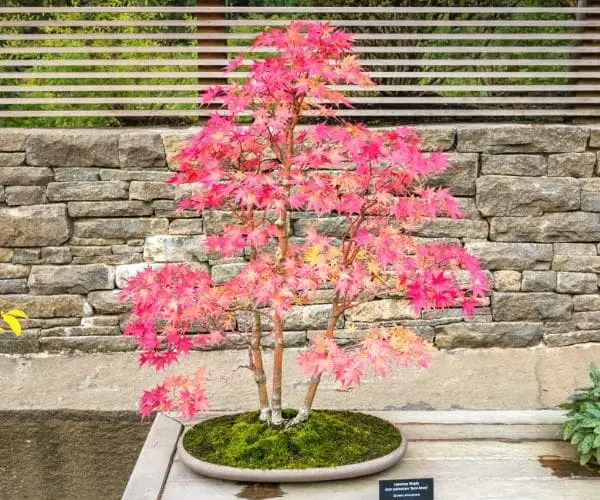
One of the most beautiful trees to craft as a bonsai, the Japanese Maple is fairly low maintenance and will create a stunning array of colors. Its leaves can sometimes be a little large for a bonsai, but it is very attractive.
This kind of tree needs a lot of water and you have to be quite dedicated to keep one alive. On the whole, more experienced growers may be better able to handle this kind of tree because during the growing season you might have to water it more than once every day.
The Boxwood Bonsai
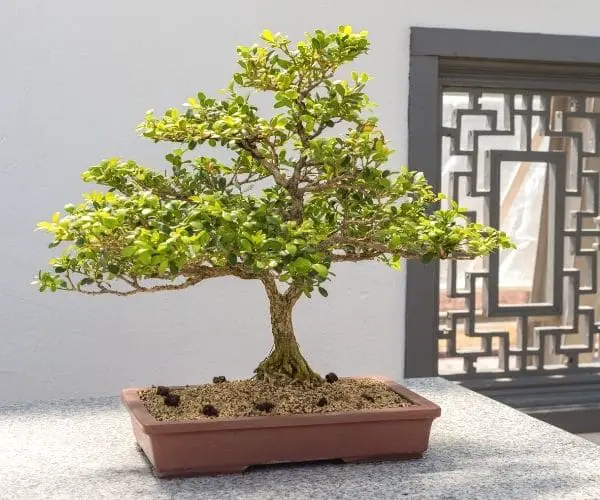
Like their large counterparts, boxwood bonsai bushes like to be grown outdoors. They are very pretty bushes, and extremely good at resisting the cold, so if you want a slightly larger bonsai for outside the house, they are an ideal option.
The Ficus Bonsai
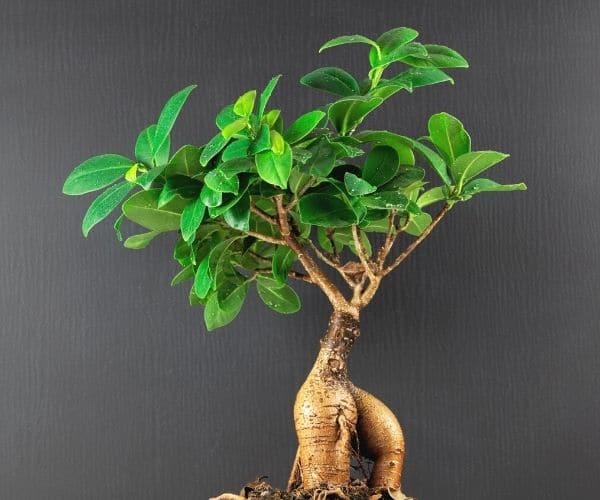
These are very common indoor, and if you have seen bonsai trees in the homes of friends or family, they have likely been ficus bonsai trees, since they tend to be quite easy to grow.
They also tend to grow in a spread-out way that is very attractive, and they can be trained to twist around things.
The Juniper Bonsai
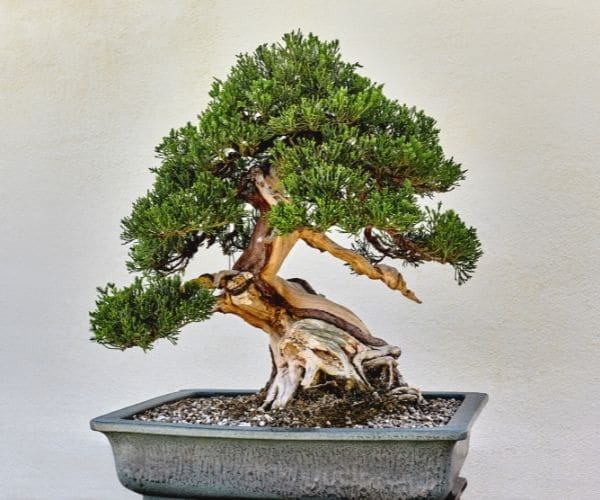
Even commoner than the Ficus, the Juniper bonsai tree is grown everywhere. These are perfect for shaping as bonsai trees because they grow very proportionally. It is easy to create a very whimsical and intricate bonsai tree with a Juniper.
They also maintain their foliage throughout the year, which makes them particularly attractive to many growers. Your miniature garden will remain intact whatever the weather does. These trees like to be grown outdoors, and they are very hardy.
The great thing about Juniper bonsai trees is that you can prune them quite hard and they will not mind or suffer any ill effects. You can get yellow, light green, or dark green Juniper varieties.
The Japanese Flowering Cherry
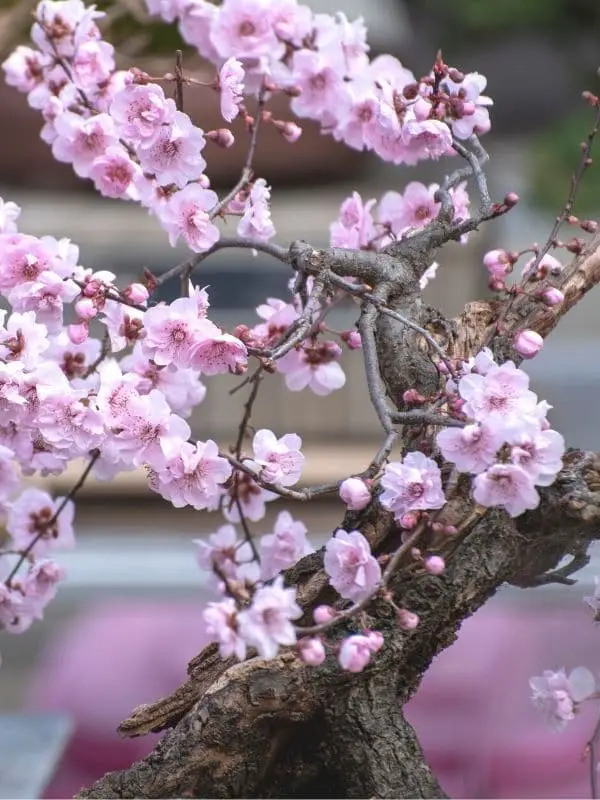
If you are looking for a particularly delicate and elegant tree to bonsai, the Japanese Flowering Cherry is wonderful. These produce very pretty flowers and have long, slim stems that are attractive.
They are easy to train into a given shape, and will happily grow outside in the summer when light levels indoors might be a bit too low for them.
Summary
You can turn any tree into a bonsai, but some trees are better suited to it than others. They will prove easier to grow and generally much healthier. Choose a variety that isn’t too difficult to grow if you are just starting to explore the art of bonsai.
